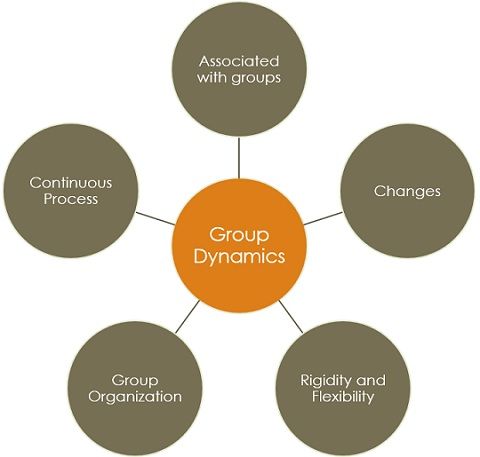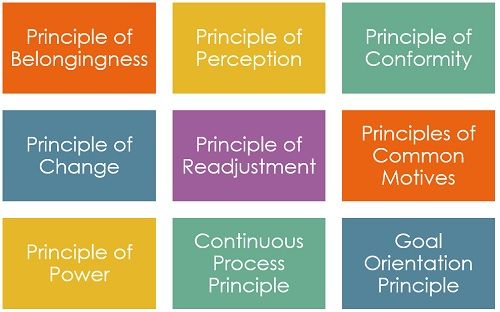Definition: Group Dynamics can be understood as a process, wherein the attitude and behaviour of a member influence the behaviour of another or other members of the group, either by choice or circumstances. Factors such as individual personality, cultural traditions and social situations, often affect the group dynamics.
It has the ability to change each member’s conduct, outlook, thinking pattern and relationship with each other.
Group Dynamics is part of social psychology which deals with the development and change in the overall structure and function of the psychological groups into self-directing ones.
Salient Features of Group Dynamics
The salient features of Group Dynamics are given as under:
- Group Dynamics is associated with groups, which means that if there exists a group, the members of such group tend to interact, change and adjust themselves according to the changing circumstances and their relationship with one another.
- Changes occur continuously in a group, i.e. entry and exit of members, change in leadership, type of task assigned, etc.
- Group dynamics are affected by rigidity or flexibility.
- Group organization leads to group effectiveness, participation, cooperation and coordination of members, as well as boosts morale.
- Groups tend to continuously restructure, adjust and readjust members, so as to release stress, eliminating conflicts, better decision making and problem-solving, which affects the group members.
Group dynamics describes how groups and group members act and react to dynamic circumstances. It deals with the changes that occur within the groups along with the interaction and forces operating with the group in a social organization.
Further, there are various behavioural and psychological forces which leads to the development and performance of a group. These forces are present within the group and differ from one group to another, as well as they vary in different kinds of group situations. The scientific study of these forces functioning within the group or amidst two groups is called as group dynamics.
Subject Matter of Group Dynamics
- What is the internal nature of the group?
- How a group is created?
- What is its structure?
- Which processes are followed in its operation?
- How group members interact with one another?
- How it affects members within the group as well as other groups and the organization?
The essence of group dynamics is the dynamics of the way of communication between the members of the group, pressures applied by the members of the group, parameters considered while making decisions, way of performing tasks, etc.
Principles of Group Dynamics
- Principle of Belongingness: A good sense of belongingness must exist or develop in the members of the group
- Principle of Perception: Changes can be implemented in the group by creating a common perception in the minds of the members regarding the need for change.
- Principle of Conformity: When continuous efforts are made in the direction of removing individual subparts of the group, it may result in the conformity to the norms of the group.
- Principle of Change: All the relevant information concerning the need, plan, strategy and outcome of change has to be shared amongst the group members.
- Principle of Readjustment: Changes in a particular part of the group is likely to create stress in the other parts, which can be reduced either by reversing the change or introducing readjustments in the related parts.
- Principle of Common Motives: A group is formed and operated because of common or shared motives.
- Principle of Power: The higher the level of the group to its members, the higher will be the influence which can be exercised on its members.
- Continuous Process Principle: Every member who is a part of a certain group is responsible for its continuous operation, so they must ensure that the activities and tasks assigned to the group are performed uninterruptedly.
- Goal Orientation Principle: The survival of a group is ensured by placing the members into an operational hierarchy and a goal-oriented action.
In a nutshell, it deals with the constantly changing and adjusting relationship existing among group members. It encompasses all those affecting actions, processes and changes, that take place within and between groups over the period of time.



Ashiru muhammad abubakar says
I’m very so happy for that
Gowtham says
It’s very useful. Thank you
Shamie says
Thanks so much . very important indeed
Anuj says
So useful.